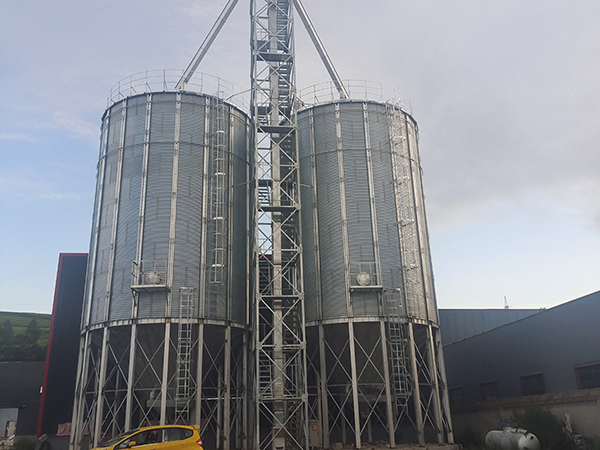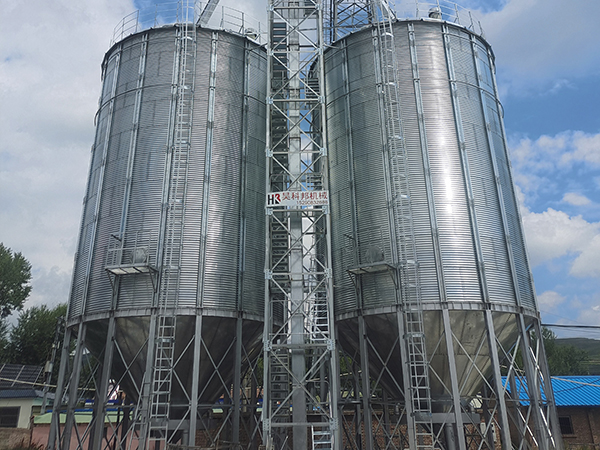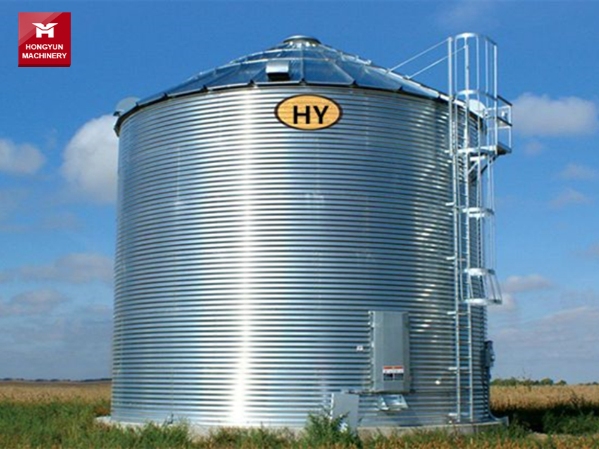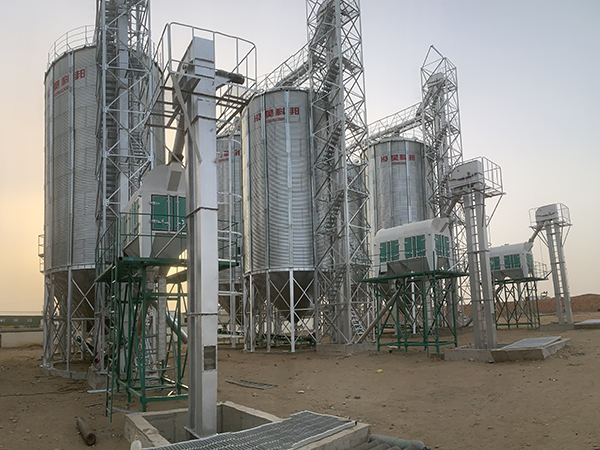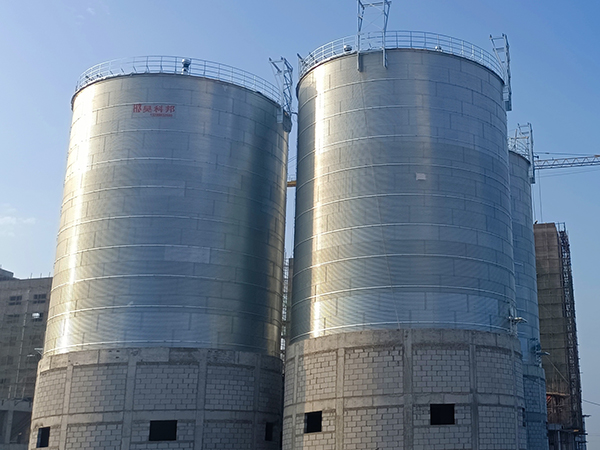Barley seed silo
Barley seed silo are specialized agricultural storage facilities designed for the storage of barley seeds. These silos are intended to provide
Barley seed silo Introduction
Barley seed silo are specialized agricultural storage facilities designed for the storage of barley seeds. These silos are intended to provide a controlled environment for the seeds, maintaining their quality and viability, and ensuring good germination rates and growth potential at the time of planting.
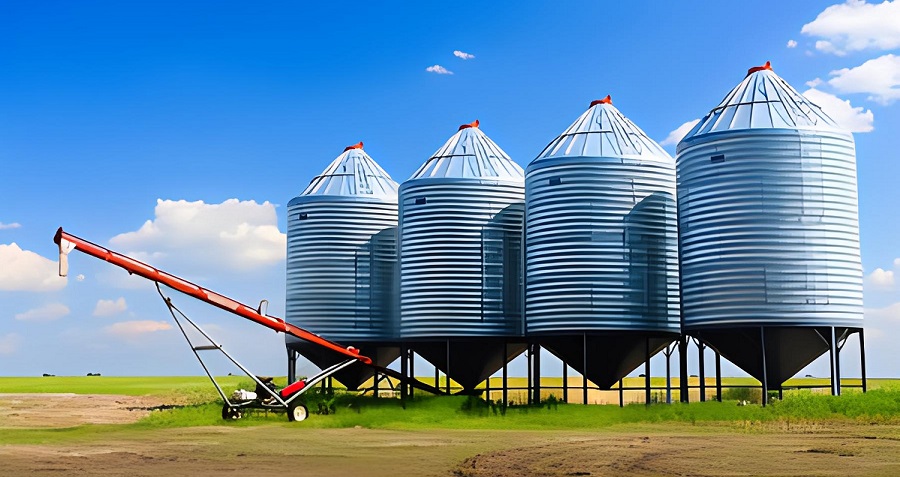
Barley seed silo features
Capacity Design
Barley seed silos are often designed with varying capacities to accommodate different scales of storage needs, ranging from small farms to large commercial seed suppliers.
Structural Stability
The structure of the silo is intended to provide stability, capable of withstanding the weight and pressure generated during storage, as well as resisting external environmental factors such as wind, rain, and extreme temperatures.
Ventilation System
An effective ventilation system is one of the key features of barley seed silos, ensuring air circulation that helps regulate the temperature and humidity within the silo, reducing the risk of seed mold and decay.
Temperature and Humidity Control
To maintain the seeds in optimal condition, silos may be equipped with temperature and humidity control devices, such as heaters, coolers, and dehumidifiers, to maintain ideal storage conditions.
Corrosion-Resistant Materials
The construction materials of the silo are typically corrosion-resistant, such as galvanized steel or stainless steel, to protect the seeds from moisture and other factors that may cause damage.
Loading and Unloading Efficiency
The silo is designed with loading and unloading efficiency in mind, equipped with automated in-feed and discharge systems, such as screw conveyors, belt conveyors, or other mechanical devices, for the rapid and efficient loading and unloading of seeds.
Monitoring System
Modern barley seed silo may include a monitoring system for real-time surveillance of environmental parameters within the silo, such as temperature, humidity, and seed status, ensuring the safety and quality of the seeds.
Ease of Cleaning and Maintenance
The design of the silo facilitates cleaning and maintenance to maintain internal hygiene and prevent the proliferation of pests and microorganisms, ensuring the long-term storage of seeds.
Safety Features
The silo design incorporates safety features, such as fire prevention, pest control, and rodent prevention measures, to protect the seeds from damage.
Adaptability
Barley seed silos can be customized according to different storage requirements and environmental conditions, demonstrating good adaptability.
These features collectively ensure the safe and efficient storage of barley seeds in the silos, providing a stable and high-quality seed supply for agricultural production.


Barley seed silo structure
Silo Body
The main structure of the silo, usually made of metal such as galvanized steel or stainless steel, to provide the necessary strength and corrosion resistance. The silo body is designed in cylindrical or rectangular shapes to maximize space utilization and structural stability.
Base
The base is typically designed as a cone or funnel shape to facilitate the smooth flow of seeds under the influence of gravity. This design helps to reduce residue and improve discharge efficiency.
Ventilation System
To maintain the appropriate temperature and humidity within the silo, ventilation openings or ducts are usually installed at the top and bottom of the silo. This helps to prevent the seeds from becoming damp, overheated, or moldy.
Inlet and Outlet Systems
These include equipment for loading and unloading seeds, such as screw conveyors, belt conveyors, or pneumatic conveying systems. These devices ensure that seeds can be efficiently loaded into and unloaded from the silo.
Monitoring and Control Systems
Modern silos may be equipped with sensors and automated control systems for real-time monitoring of environmental parameters within the silo, such as temperature, humidity, and the storage status of the seeds.
Sealing System
Sealing materials and techniques are used at the top, bottom, and connecting parts of the silo to ensure the airtightness of the internal environment, preventing the intrusion of external moisture, dust, and pests.
Safety Protection Facilities
These include fire prevention devices, fire-fighting facilities, safety warning signs, and emergency escape routes, ensuring the safety of the silo during operation, maintenance, and emergency situations.
Support Structure
The silo may require additional supporting structures, such as stands or legs, to ensure the stability of the silo and the proper weight-bearing of the ground.
These components together form the structure of a barley seed silo, designed to provide a safe, efficient, and controlled storage environment for barley seeds.
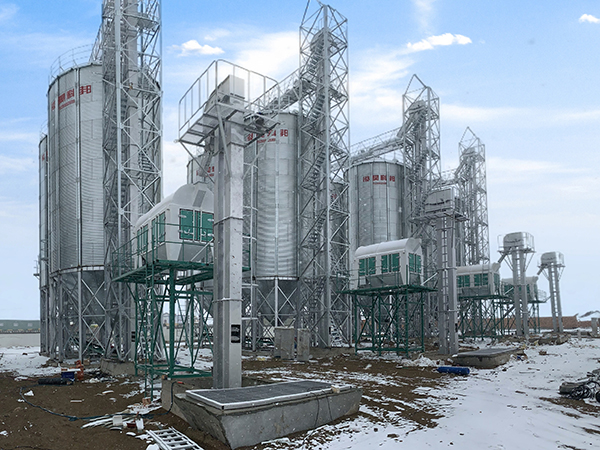
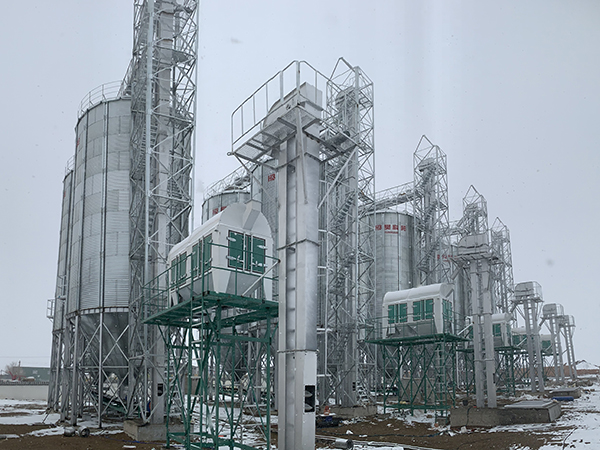
Barley seed silo advantages
Enhanced Seed Quality Protection
By controlling the temperature and humidity within the silo, barley seed silos protect seeds from extreme climate conditions, thereby maintaining or improving seed quality.
Prevention of Seed Contamination
he design of the silo effectively prevents the intrusion of pests, pathogens, and other potential contaminants, ensuring the purity and safety of the seeds.
Optimized Storage Space
The vertical design of the silo saves valuable space, allowing for more seeds to be stored per unit area, which is particularly suitable for areas with limited land.
Automation
Modern barley seed silos are typically equipped with automated loading and unloading systems, reducing manual labor, increasing efficiency, and lowering the error rate during operations.
Ease of Management
Monitoring and control systems within the silo enable managers to monitor the status of the seeds and the environmental conditions of the silo in real-time, making timely adjustments to ensure the optimal storage condition of the seeds.
Reduced Losses
By minimizing losses during storage and handling, silos contribute to improving the economic benefits of agricultural production.
Strong Adaptability
Barley seed silo can be designed and adjusted according to different climates and environmental conditions, meeting various agricultural production needs.
Food Security Assurance
By ensuring the quality and supply of seeds, silos provide a stable source of seeds for agricultural production, aiding in the safeguarding of food security and sustainable agricultural development.
Environmental Protection
Centralized storage of seeds reduces environmental impact, decreases the use of pesticides and fertilizers, and promotes green agricultural development.
Long-Term Storage
The design of the silo allows for the long-term storage of barley seeds while maintaining their viability and germination rate, providing security for future planting seasons.
These advantages collectively ensure that barley seed silo play a significant role in protecting seeds, improving storage efficiency, reducing losses, facilitating management, assuring food security, and protecting the environment.
Application scope of Barley seed silo
Coban Silo is widely used for grain storage such as wheat, corn, soybean, paddy, rice, soybean meal, barley, malt, sunflower seeds, rapeseed, peanuts, flour, and other powder materials, oat, special Silo, and seeds, etc.

Barley seed silo technical parameters
Scientifically speaking, the Silo capacity should be measured with volume (m3). Even in the same grain Silo, the storage tons will be different for different grains with different densities. The following table is calculated based on a Silo density of 0.75kg/m3, and surely HKB customizes Silo systems unique for you.
| Most Popular Hopper Bottom Steel Silo Technical Specifications | ||||||||
| Capacity | 50Ton | 100Ton | 150Ton | 200Ton | 300Ton | 500Ton | 1000Ton | 1500Ton |
| Model | TCZK
03605 |
TCZK
04507 |
TCZK
05507 |
TCZK
06406 |
TCZK
07307 |
TCZK
07313 |
TCZK
11010 |
TCZK
12811 |
| Diameter(m) | 3.667 | 4.584 | 5.500 | 6.417 | 7.334 | 7.334 | 11.000 | 12.834 |
| Total Height(m) | 9.56 | 12.53 | 13.25 | 12.85 | 14.70 | 21.42 | 20.95 | 23.51 |
| Volume(m³)
Density:0.75ton/m³ |
69 | 150 | 222 | 273 | 415 | 699 | 1346 | 2039 |
| Most Popular Flat Bottom Steel Silo Technical Specifications | ||||||||
| Capacity | 1000Ton | 1500Ton | 2000Ton | 2500Ton | 3000Ton | 5000Ton | 8000Ton | 10000Ton |
| Model | TCK
10014 |
TCK
11915 |
TCK
13715 |
TCK
15514 |
TCK
15518 |
TCK
18321 |
TCK
24718 |
TCK
25621 |
| Diameter(m) | 10.084 | 11.918 | 13.750 | 15.584 | 15.584 | 18.334 | 24.751 | 25.668 |
| Total Height(m) | 18.69 | 20.34 | 20.87 | 20.30 | 24.78 | 28.60 | 26.99 | 30.60 |
| Volume(m³)
Density: 0.75ton/m³ |
1335 | 2009 | 2701 | 2467 | 4145 | 6693 | 10879 | 13484 |

